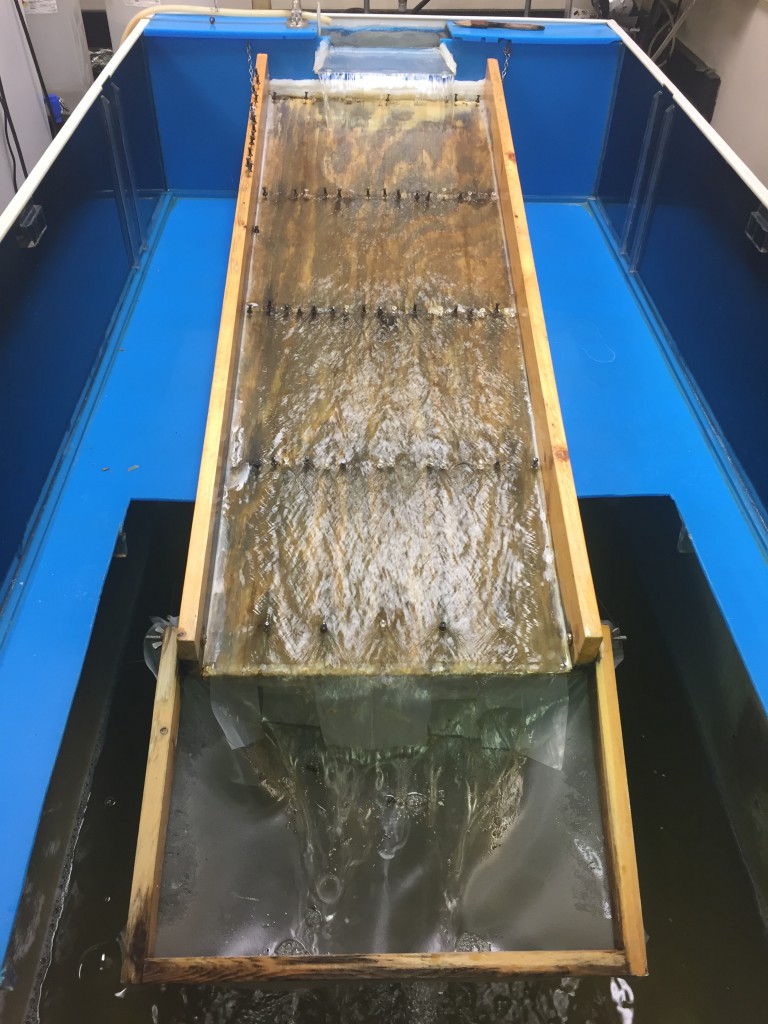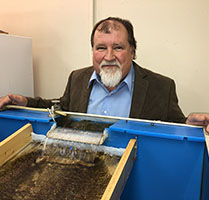The University of Georgia Black Fly Research and Resource Center has been awarded a contract for a second year of funding with the U.S. National Institutes of Health’s (NIH) National Institute of Allergy and Infectious Diseases (NIAID).
The center is the world's only black fly colony and is operated in the UGA College of Agricultural and Environmental Sciences Department of Entomology.
The NIH contract raises total federal funding for the center to $221,277 and supports a collaborative effort between NIH/NIAID, the UGA Department of Entomology and the lab of Danny Mead, professor in the UGA College of Veterinary Medicine. Entomology Professor Darold Batzer is principal investigator for the effort and Mead is co-principal investigator, with Elmer Gray serving as assistant project director. Ray Noblet, the former head of the Department of Entomology, was instrumental in the establishment of the black fly center at UGA and will serve as scientific advisor to the project.
Black flies are considered the third-most important arthropod vector and pest after mosquitoes and ticks due to their aggressive biting behavior and because they transmit the filarial nematode that causes onchocerciasis, also known as river blindness, the second-most common cause of blindness due to infection after trachoma.
The UGA black fly colony is a one-of-a-kind resource that was founded in 1981 at Cornell University and has been maintained at UGA since 1999. Black flies require flowing water to complete their life cycle, and the colony simulates this environment with nine aquatic rearing units that create miniature rivers for the larval and pupal stages to develop. Each unit can support approximately 300,000 larvae. Adult flies emerge within the rearing units and are captured, mated and provided moistened substrates to serve as egg-laying sites.
Because the species of black fly studied at the lab can deposit their first batch of eggs without a blood meal, no animal resources are required to maintain the colony.
The colony has been used for a variety of research projects through the years, including a wide range of vector transmission, environmental monitoring, vector control and larval feeding studies. Current research being conducted in the laboratory involves larvicidal efficacy evaluations, topical repellent evaluations and growth studies related to climate change. The laboratory also serves as a preferred site for teaching and educational outreach visits for a wide range of students.
The Black Fly Research and Resource Center will work in parallel with the NIH-supported Filariasis Research Reagent Resource Center (FR3) that is operated through the UGA College of Veterinary Medicine under the direction of Andy Moorhead. These centers demonstrate UGA’s commitment to supporting vector biology and disease transmission research and help to support the university’s position as a center of excellence in these fields.
For information on obtaining materials from the black fly colony, visit the BEI Resources website. All stages of the black fly life cycle are available, live or preserved, as well as total nucleic acid extracts. These materials provide a unique opportunity for research on this important vector group and the unique biological comparisons that can be conducted with an organism that has been isolated in colonization for 40 years. The colony is pathogen-free and was genetically characterized about 20 years ago, so baseline information is available.
For more information on black flies, contact Elmer Gray at ewgray@uga.edu, and for information on filarial materials, contact Andy Moorhead at amoorhed@uga.edu.








